Bird Identification For Beginner Birders: A Complete Guide
We’re reader-supported; we may earn a commission from links in this article.
After struggling with bird identification as a beginner birder, I realized the importance of being able to identify birds well especially out in the field. Putting a name to the bird really somehow brings about a certain uniqueness to the bird and I’m sure all birders will know the satisfaction that it brings. I noticed there weren’t many comprehensive bird identification guides online, so I compiled some useful resources from some research I did a while back on the net. Here we go.
Why You Should Learn To Identify Birds
Identifying birds is one of the things that I really enjoy and I think is a really big part of being a birder. Without identifying the species of a bird you see in your backyard feels a little weird. Its like you’re being introduced to someone new, but you don’t know their actual name. So it gets a little awkward and you can’t feel close to them. Same thing applies to birds.
Bird identification is a basic skill that all birders should learn to pick up if they want to improve on their journey to extend their knowledge of birds and life lists. If you are interested in learning more about improving your bird identification skill, then read on!
Identifying Birds By Sight
Birds are most often identified by their sight. Visual cues of the bird such as size, shape, plumage, behavior, habitat, season are a big part of how a bird can be identified. Sometimes a small difference in one of these aspects can make the difference between two very similar sub-species. From my research and experience, there are 6 main key points that all birders need to take note of when they identify a bird by sound. Let me explain in detail.
1. Size
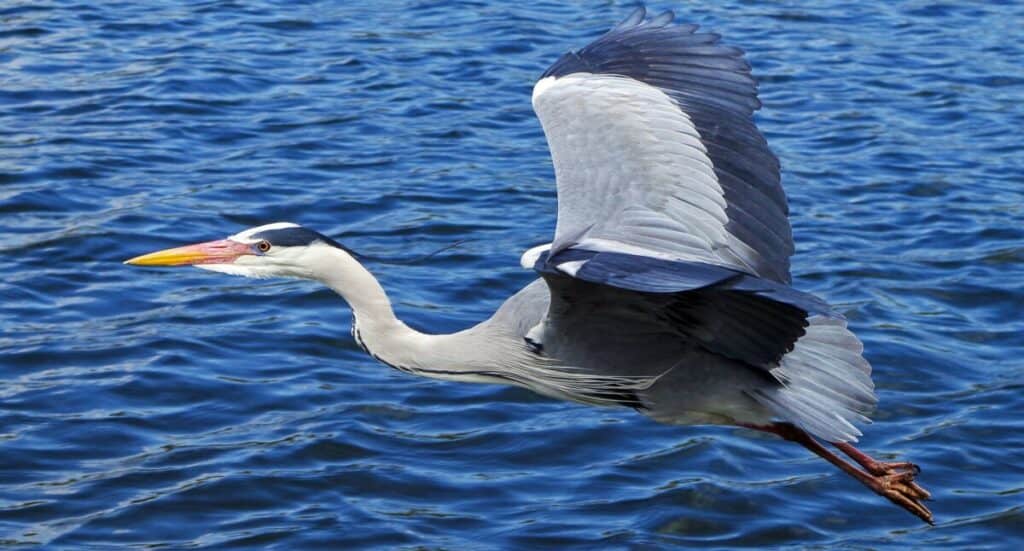
First off, let’s start with learning how to identify a bird by its size. Right off the bat, when you look at a bird, you will notice its size. Just from the size of a bird alone, you practically can eliminate many possible bird species from your list of suspects.
More often than not, you’ll only make a short glimpse of birds that fly by which are too quick to be spotted. As such, you need to be familiar with the common birds in your area. If the American Robin is a common bird in your area, get familiar with its size. You should also learn how to tell how much bigger a Blue Jay is from an American Robin. You’ll also benefit from learning the bigger size of a Great Blue Heron. These common birds will then serve as a common reference point for both yourself and other birders. When you come across a bird with a similar size to one of these reference birds, it will be much to take size into consideration when narrowing down the list of possible birds.
Many beginner birders tend to only focus on the colors first and not the size. Size cannot be overlooked, as it can work as the first line of elimination of a lot of birds that don’t fit the criteria. Basically, if what you’re looking at is a small bird, then you wouldn’t consider it to be a bird of prey or a heron.
Do take note that size is also an estimation of what bird it could be because the size of the bird is relative to how far you are away from it. Birds that are farther appear smaller, and birds closer look bigger.
2. Shape
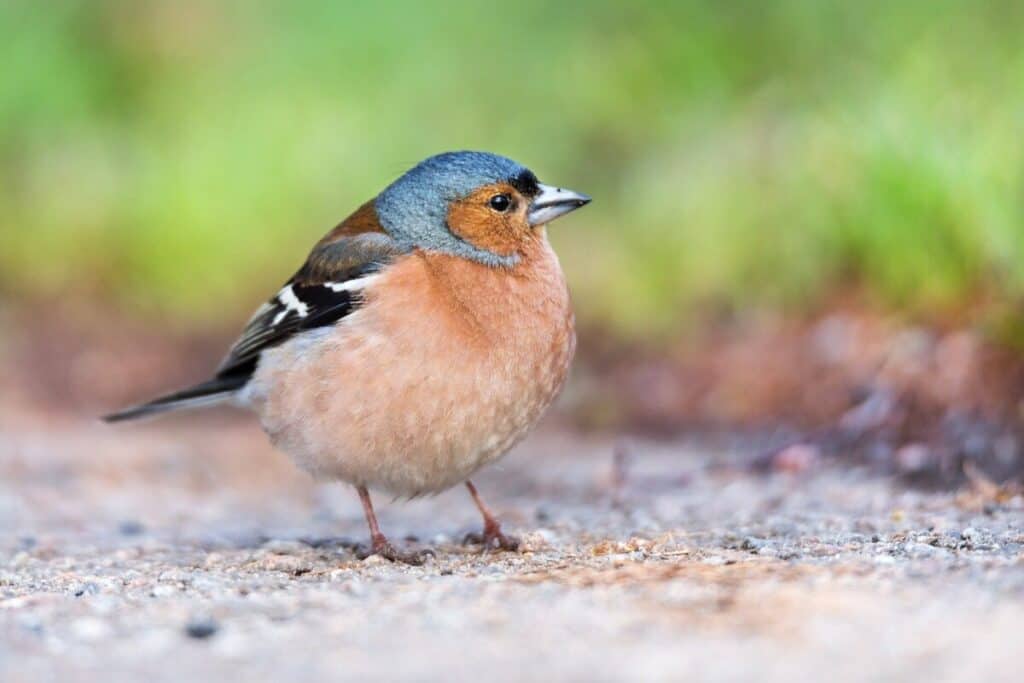
This particular aspect of birds tends to be overlooked because of how subtle it is. Birds do not just come in different sizes but also in different shapes. Some birds can be plumper, and some can be more streamlined and aerodynamic.
You can start by observing the silhouette of a bird. Silhouettes are common especially if the light does not happen to be in your favor. We can’t choose if the bird decides to stand in the light or not. Just from the silhouette alone, we can deduce lots of information.
When observing the silhouette, take note of the posture the bird is in. Does the bird tend to lean forward more or stand upright? These are often subtle clues as to how the bird behaves. From determining their silhouettes, you can also check back with your reference birds that you know well, then compare them to get some clues.
Take note of the bird’s beak, wings, and tail, in order. Is the peak sharp, pointed, broad, or hooked? These are common shapes of beaks that birds have and can help to determine a certain family of birds. Notice the wings and its wingspan. Are its tips pointed or long? These can assist you in determining the right type of bird as swifts and swallows have more pointed wingtips. Then ask yourself about the tail. Is it long or is it short? Is it fanned out or forked. These can provide clues to birds such as the Malaysian pied fantail and the Fork-tailed Flycatcher.
3. Plumage

Maybe you’ve heard the word plumage before, and you’ve always wondered what it is. Don’t worry, I was once curious too. The plumage of a bird is basically the layer of feathers that cover a bird. These include features such as the pattern, color, and arrangement of the feathers. The patterns and colors can be different in different species, sexes, and age classes.
Species
Different species have different plumages. I want you to focus on the overall plumage pattern instead of picking at small features of a bird. Oftentimes, you may only be able to see birds with a quick sighting. As such, it is practical to take quick mental note of the light and dark colors of the bird’s plumage. What I mean by this is that you would ask yourself these questions: “What are the light colors on this bird?” Notice the bright yellows, blues, or white streaks on a bird. You then ask yourself: “What are the dark colors on this bird?” Notice the dark browns, blacks, and dark blues.
To be effective in putting an ID to the birds in your area, it’s important to do a little research on some common patterns. Let’s say you encounter a flash of red flying past, then you would consider the Northern Cardinal as a possible bird in your list.
Gender
Be aware of the gender of the bird. Generally speaking, most birds that have colorful plumage are males. The colors are used for attracting a female to be their mate. While it is important to recognize the colorful plumages of males, take note of the more drab plumages of female birds too, because that may be an area that you are missing out on when trying to ID a bird in question.
Age
Different age classes affect the plumage of birds. Chicks, juvenile birds, and adult birds often have different plumages. Chicks and juvenile birds tend to have less developed plumages that may only start to change into adult plumage at a certain life stage when they are sexually mature. So do bear in mind that if you can’t seem to ID a certain bird, do entertain the thought that it could be a juvenile bird.
If you have a proper picture or clear sighting of the bird, you’ll want to look more closely at the patterns on the different parts of the bird. For example, if you see a bird with a black-colored cap, it could provide possible leads such as the Black-capped chickadee. However, do pay attention to the location of the black streak and other plumage features as it could also Black-capped vireo.
4. Behavior
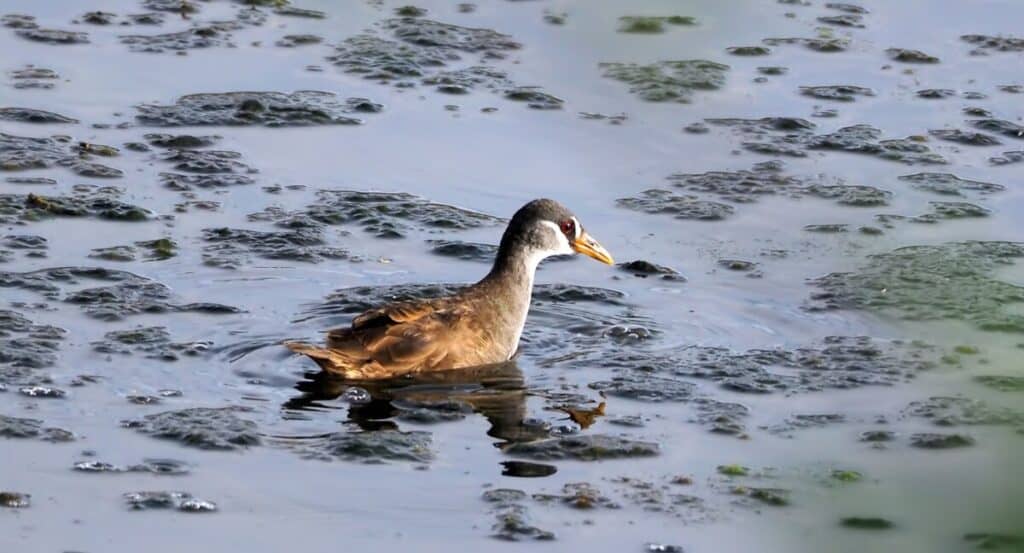
The bird’s looks aren’t all that we can use to deduce the identity of a bird. Look also at its behavior. In practical situations, these birds won’t just be sitting still – some may be hunting, feeding, and even just climbing a tree. Sometimes as beginners, we may get distracted by all the beautiful plumage that we forget to observe how they interact with their surroundings. These behaviors can all point to their identity.
Let me give you some guiding questions to get you started. Is the bird hopping on the ground, sitting completely still on the ground, or constantly flitting around in the canopy and treetops? If the bird is hopping on the ground, it is likely that it is a bird that forages on the forest floor for worms and bugs. The bottom line is that bird behavior follows some set patterns. There are birds that are often seen on the ground, and there are those that seem to never land on the ground but prefer to remain perched on a tree. Swifts are known to be flying in the air for the most part of their lives. In fact, it is difficult to find them nicely perched because of this.
If you happen to find a bird on the tree bark, you can start to suspect that the bird may be a woodpecker, then think of the traits that make up a woodpecker. If you notice that it is pecking at the bark, then it can be concluded that it is indeed a woodpecker. Subsequently, you can utilize field guides and field guide apps to assist you in determining the exact ID of the bird.
5. Habitat/range
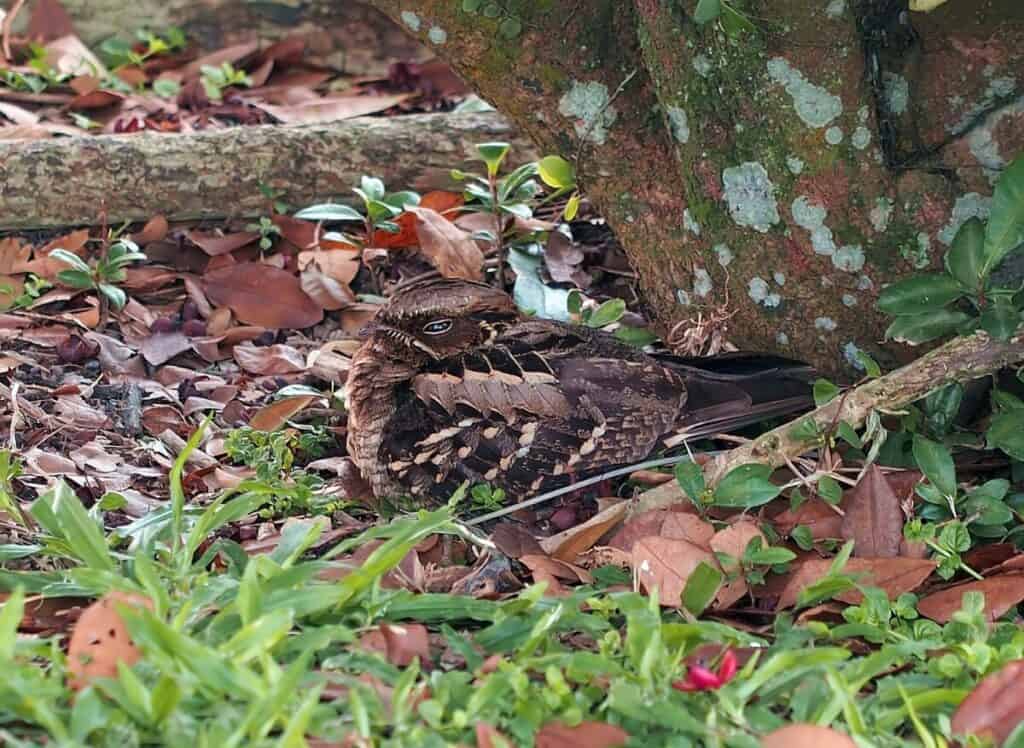
It’s also really important to take the bird’s habitat into consideration. Birds are often in their typical heights and habitats. For example, you would typically see a nightjar sitting on the forest floor, but you would not expect to see a swift do the same. It is important that you learn what are the different habitats that the birds in your area like to hang out at, then narrow down your bird identification process from there.
Also, take note of the type of vegetation you are in. At the beach, you can expect more shorebirds, but you would not expect to see them in the forest.
6. Season
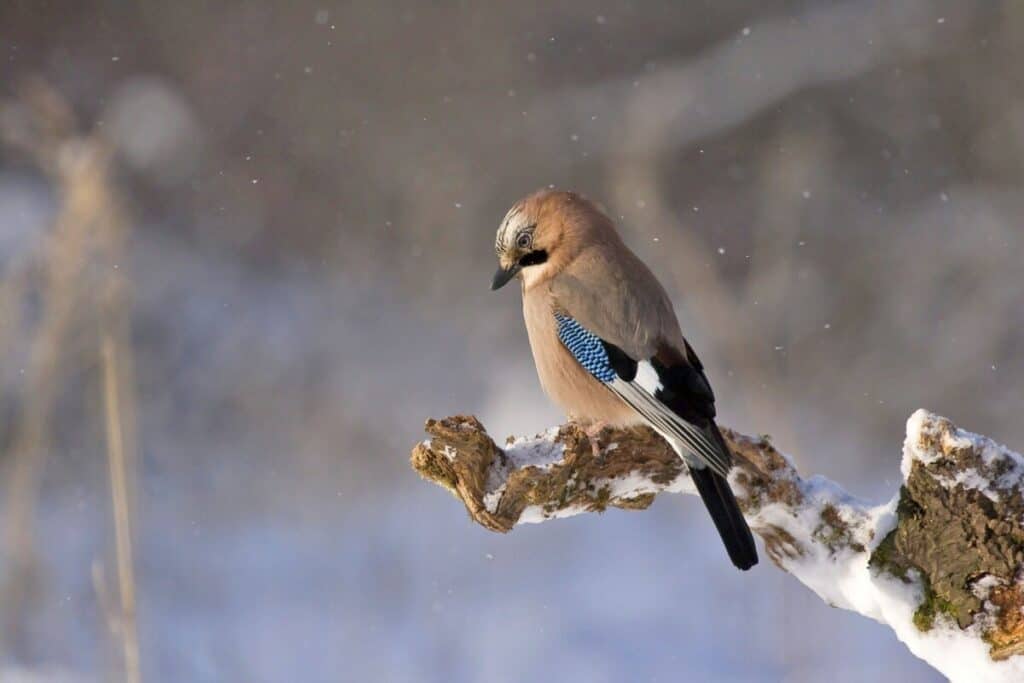
It’s also really important to know the types of birds you would expect to see during a particular season. Be sure to do your due research before you head out the door. Pick up a field guide or a birding app to familiarize yourself with the resident or migratory birds you can expect. For example, rusty-capped sparrows can be told apart just by the seasons that they appear. If summer, then its’ a Chipping Sparrow, if winter, then it’s an American Tree Sparrow.
Identifying Birds By Sound
A big part of the birding experience is the sound that birds make: their songs, calls, and even their non-verbal sounds. The practice of identifying birds by sound is known as birding by ear. It involves the usage of the calls and songs of birds to identify their species. This is a more advanced technique of birding but can provide a lot of satisfaction if you manage to get it right.
The technique of birding by ear can be very useful in early morning and nighttime birding when visibility is low. In these low light settings, it can take more effort to identify birds but that shouldn’t stop you from using your sense of hearing to the different features of sounds a bird makes.
Bird Sounds
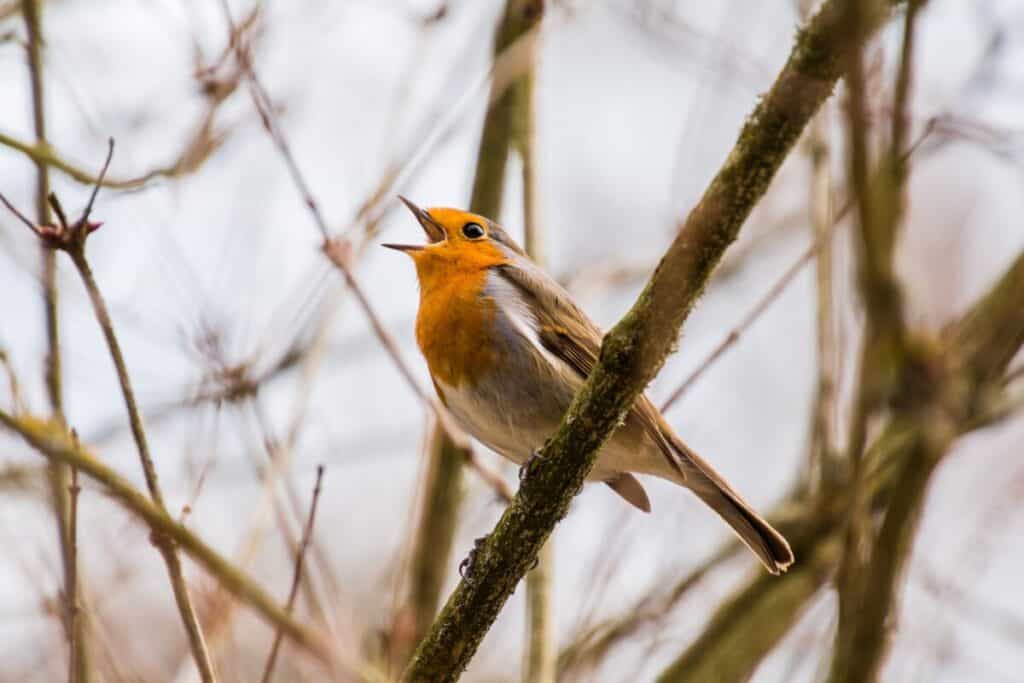
Bird sounds are really unique and if carefully analyzed. These can differ a lot between species and can be used to identify a certain bird species. Bird sounds can be categorized into calls and songs.
Bird Calls
- Alarm calls
- Flight calls
- Begging calls
- Contact calls
Alarm Calls: These calls are easily picked up due to its distinct sharp, piercing sound. This type of call is usually short but can be heard over long distances. In some cases of great danger, the bird can call rapidly and repeatedly. This call serves its purpose in warning other birds of impending danger when the bird feels threatened by, for example, a predator closeby.
Flight Calls: These calls are often heard when birds take flight or while in flight. Bird species that flock tend to make flight calls more often than those that do not. In fact, birders often listen out for these sounds to be alerted of birds that may be passing by overhead. Birds make these calls when want to announce their location to other birds when moving. Flight calls are also most often heard and used in bird migration over long distances.
Begging Calls: These calls are highly specific only to young birds. These can come in the form of rasps, chirps and wheezes. Theses sounds are usually loud enough for their parents to hear them within the near vicinity of its nest. This type of call is typically paired together with wing-fluttering motions, with its purpose to draw attention from their parents.
Contact Calls: Birds that travel in large flocks typically use this type of call to give signals to one another. These can come in the form of chirps, buzzes that are simple but clear. However, these calls are not to be confused with alarm calls because they are not as piercing and urgent in pitch. These calls are used by mating birds to keep in touch and for alerting other birds of a food source during foraging.
Bird Songs
Bird songs are undoubtedly the favorite kind of songs that are well-liked by the public as well as birders all over the globe. These sounds are probably the most distinctive and well-known type of sound that birds will make. Bird songs are typically longer in length, more complex, and are strung together in a combination of syllables that form a melodious and pleasant tune.
Difference Between Bird Songs and Bird Calls
It then is important that you learn how to pick out the differences between bird songs and bird calls. Just by this skill alone, it can have a drastic effect especially when the hordes of songbirds sing during the migratory period. It’s an amazing feeling to be able to listen in to determine the birds in the area without looking for them. It is often easier to pick out and identify more birds by ear than by sight alone.
The main difference between bird songs and bird calls are the complexity, length, and context. Bird songs are often more complex, longer in length, and used more for declaring territory and attracting a mate. A bird call is used for more vital functions such as alarm calls to warn others of predators and flight calls to announce their presence in flight.
P.s. I also wrote an article on the different types of sounds that birds make. The article contains more details on bird sounds that I think you might find useful in your quest for bird identification!
Using Field Guides For Bird Identification
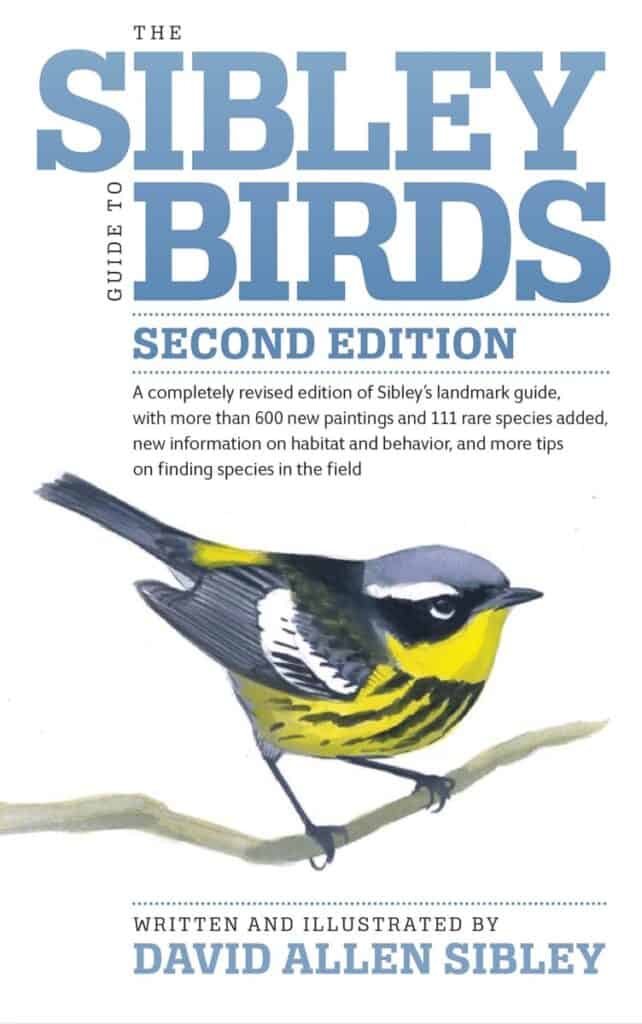
When identifying birds, it’s important that we have a reference that we can match our bird in question to. Traditionally, this has been the field guide in hard copy form. The field guide is often a reference book that readers can use to identify wildlife, and in our case, birds. Field guides typically include illustrations and pictures of birds, with a detailed description of their species, plumage, range, vocalization patterns, and migratory routes to name a few.
How then can you use a field guide for identification? When you purchase a field guide, before you head out birding, you’ll want to start familiarizing yourself with the birds in the book. If you’ve done your due research you should be able to source for a book that pertains to the birds in your area. It is important that you do not skip this pre-reading before heading out so that you have a mental reference for the birds. With this reference in mind, it will be much easier for you to match the birds in person to the illustrations in the field guide.
A little suggestion for you would be to bring along a small notebook that you can quickly sketch how a bird looks like and scribble some key features of the bird. Then, when your hands are empty to flip through your book, you can take your sketch and scribbles as a reference to do the matching.
Using Bird Identification Apps
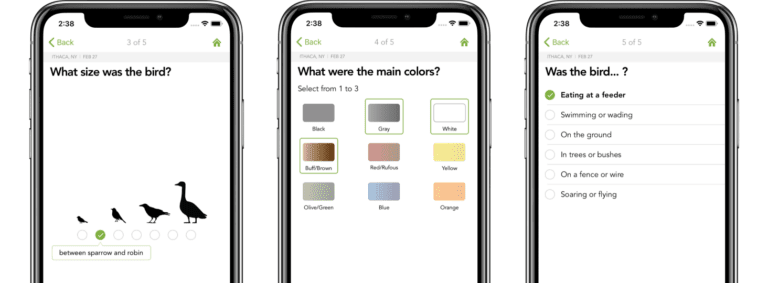
While some prefer to have a field guide book in hand when they are birding, some of you may prefer to use an app for the purpose of identifying birds. Technology has advanced fairly far such that bird identification is now much easier compared to the previous few generations.
Now we have apps that not only provide the descriptions and pictures of birds, but also the vocalization clips that can be played from your phone. What’s best is that some of these apps even can make use of artificial intelligence (AI) to detect bird sounds and images of birds, and finalize a list of possible birds for you! In fact, I am such a believer in using bird identification apps that I have done some real research on some of the best for this purpose. I wrote an article here on the top 5 bird identification apps you need to download before you go birding!
Personally, I love using bird identification apps because of how it doesn’t add any extra weight to my backpack because I would already bring my smartphone out. For the tech savvy, I think this is one thing that you definitely should not miss out on.
Practice Bird Identification With Online Quizzes
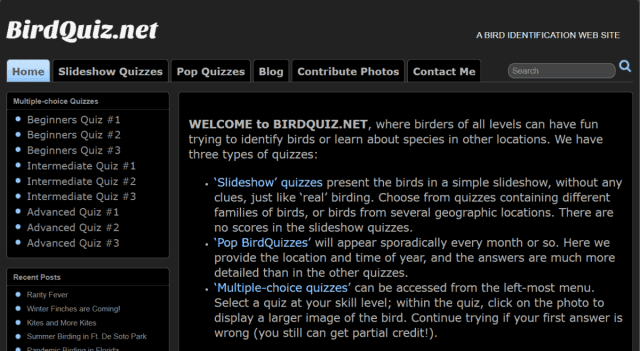
Up until now, I’ve only talked about how we can use references for bird identification, but not how we can practice in the skill itself. You may find it useful to practice using online quizzes when are feeling bored or just stuck at home. Generally, online bird identification quizzes show you a picture or sounds of a bird in question and give you multiple choices of bird species to pick the right answer. The difficulty and method of testing in each and every of the online quiz websites may vary, so it’s best for a beginner like you to start with the simple ones.
As a beginner, you’ll want to start with birdquiz.net This website is perfect for complete beginners because it features a beginner’s quiz. I have personally tried this quiz as a beginner and they start with the family of birds first, so you don’t dive straight into the small differences between bird species. As you get better at identifying the bird’s family, you can proceed progressively into the intermediate, advanced, and other types of quizzes.
I have written a separate article here of 4 examples of birding quiz websites on which you can practice your ID skills. Do check it out for more options to websites to practice bird identification.
Learn Bird Identification From The Birding Community
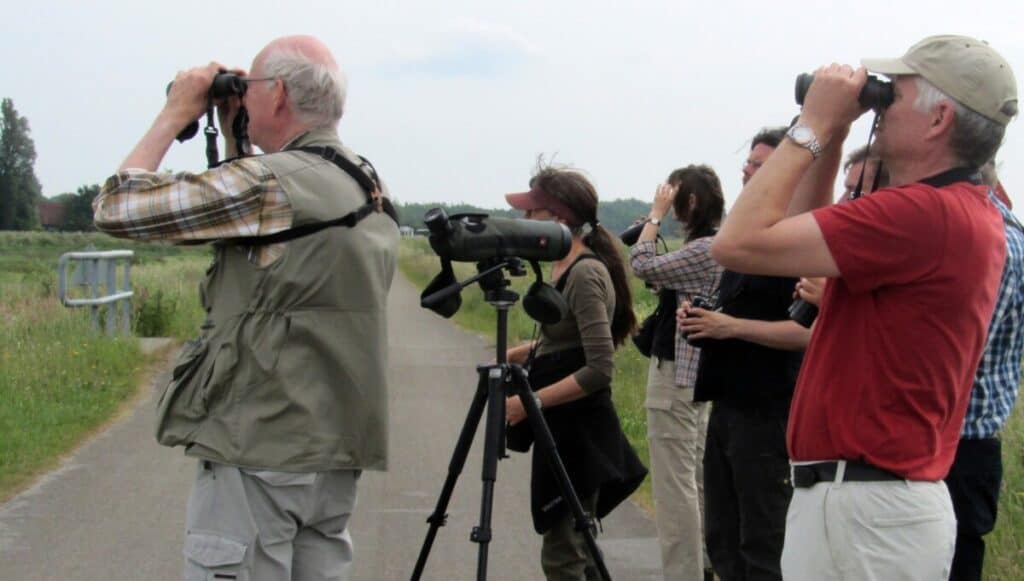
As a beginner, it’s okay to be comfortable birding alone or with your close friends, but I encourage you to join a birding community when you are ready. Sometimes, when you go birding alone, there may be certain things that you won’t be able to pick out as compared to going birding with a more experienced birder.
You can first start on this journey by searching up your local birding community on Facebook or Google. Then get into your local communities, whether that be in WhatsApp groups of Facebook groups. Just being in the community alone, you will receive regular updates on bird sightings in your area. As you see these bird sightings in pictures that they upload daily, you’ll slowly learn which are the more commonly seen birds and the more uncommon birds in your area. It’s a great way to learn of the bird species name and get familiar with their size, shape, behavior, and plumage. What’s best about these common picture uploads of birds is that you can also do so! Feel free to take the initiative to ask those in the community for advice on the bird ID of the bird in question, I’m sure they will be willing to help you along.
You can consider reaching out to those in the community and initiate a birding trip or tag along with a more experienced birder. On these trips, you’ll be able to listen to the advice from those who are steps ahead of you in their birding journey and improve in your bird identification skills from there.
Misidentifying Birds
There’s something important that you need to know. Even if you made a mistake in identifying birds wrongly, it’s okay! We all make mistakes, including myself and all other experienced birders. We are all at different stages of experience in the birding journey. Don’t worry too much about the mistakes, and instead learn the key features that defined the problem so that you won’t make that same rookie mistake again.
Remember, even the most experienced birders can feel like a rookie when they go birding overseas in a different habitat. So don’t worry too much about it!
Final Thoughts
Bird identification is a skill that is learned through experience and time that you’ve spent birding. If you’ve put more time into it, then it will definitely pay off and bear some fruit. As a beginner, you may not get everything right and all the details at the start, but you can slowly improve your skills to be a decent birder.
Through this guide, I hope that you have at least learned something new, and I hope that it helped you along in your bird identification journey as a beginner, or simply just to get you started.
Happy birding!
My Recommended Birding Resources:
Hey there, Justin here!
Here’s a list of all my favorite resources, products, and brands I trust and love.
My Celestron Nature DX 8×42 Binoculars: It’s a great budget pair for beginner birders. Highly valued for its price! Read my review.
Safe Paint for Bird Baths Guide: Learn about non-toxic paint for painting bird baths.
Safe Sealers for Bird Baths Guide: Learn which sealers are safe for bird baths.
Safe Paint for Bird Feeders Guide: Learn what special care needs to be taken to paint bird feeders with the right paint.
Safe Paint for Birdhouses Guide: Learn about non-toxic paint for painting birdhouses. (Not the same as bird baths!)
Bird Identification Apps Guide: 2 of my favorite birding apps are Merlin Bird ID, and eBird Mobile! Merlin is great for tracking and identifying birds, and eBird Mobile is great for tracking the birds sighted when birding.
Check out my resources page for the full list of resources I recommend!

Justin Chia
Justin is the founder and author of Birding Outdoors. He is a Nanyang Technological University (NTU) alumnus with a Bachelor of Biological Sciences and a former data analyst.
Now, Justin runs the Birding Outdoors blog full-time, hoping to share his deep love for birds, birding, and nature with others.
To unwind, Justin enjoys gaming and reading.





![Why Are Birds So Jerky? [ANSWERED!]](https://birdingoutdoors.com/wp-content/uploads/2020/10/cardinal-3903642_1920-768x512.jpg)
![How Long Does It Take For A Bird To Grow Up? [Answered!]](https://birdingoutdoors.com/wp-content/uploads/2021/05/spring-712051_1920-768x554.jpg)
